fingerprintscanner
Latest

The Galaxy S10's fingerprint reader was thwarted by a 3D printer
The fingerprint reader in the Samsung Galaxy S10 has caused a few issues already, such as incompatibility with some types of screen protectors. The in-display scanner uses ultrasound to read the physical ridges of your fingerprint, supposedly making the device more secure -- thieves shouldn't be able to press a photo of owners' prints against the reader to unlock the device, for example. But it seems people are already finding ways to thwart the sensor.

The OnePlus 6T will be unveiled on October 30th
The OnePlus 6T, a more high-tech version of the OnePlus 6, will launch on October 30th, the company announced. It's expected to pack an in-display fingerprint sensor and feature a much smaller notch than Apple's latest iPhones and (apparently) the Google Pixel 3XL. On the downside, it will apparently lose the 3.5mm headphone jack, forcing you to either adapt the USB-C connector or use OnePlus' upcoming USB-C Bullets V2 earphones.
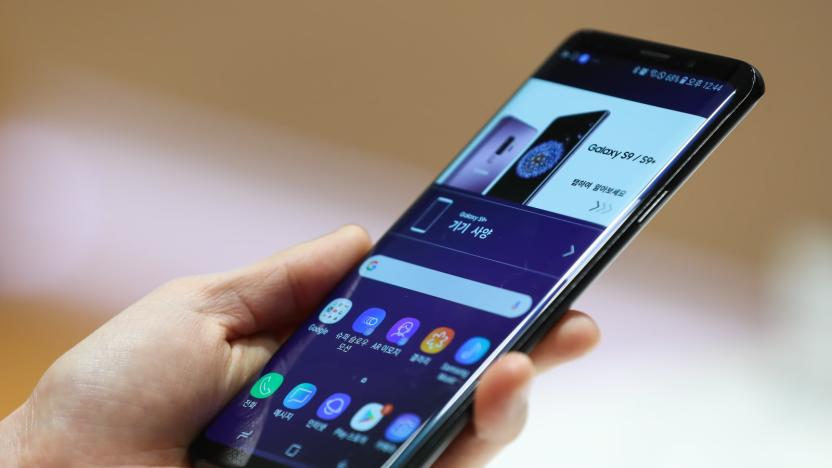
Samsung's Galaxy S10 may include an in-display fingerprint reader
The Galaxy S9 may have been a modest evolution of its predecessor, but you might not get to level that accusation against the S10. Korean financial news outlet The Bell claims that the Galaxy S10 (codenamed "Beyond") will include an in-display fingerprint reader similar to devices like the Oppo Find X or Vivo Nex. You wouldn't have to lift up your phone and hunt for the reader on the back. It's reportedly "considering" an iPhone X-style face recognition system at the same time, so you might even have a choice of cutting-edge biometric sign-ins.
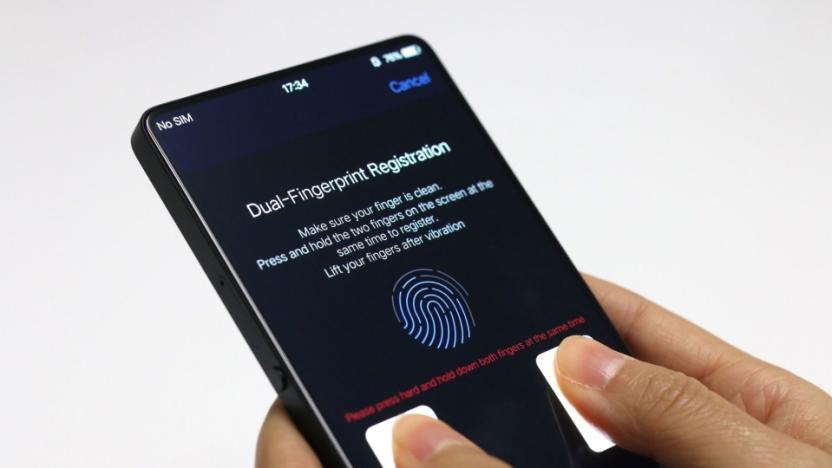
The chaos of unlocking your phone in 2018
PIN codes and patterns are passe. MWC 2018 kicked off with the usual fanfare of a major flagship launch -- the Galaxy S9. With it, Samsung introduced its own, new, face unlock feature. Google may have added the feature to Android many years ago, but it seems technology has progressed enough to make it worth resurrecting by Samsung -- with some extra biometric backup. The House of Galaxy might have also felt the competitive tug of Apple's surprisingly slick Face ID unlock feature on the iPhone X. Samsung wasn't the only company innovating when it comes to how we get our smartphone working. And it's not just the thousand-dollar flagships, either. Biometrics are here in a big way, although no-one seems to know which method's best. How many of these techniques will last to see 2020?

Vivo beats Apple to an under-display fingerprint scanner
There have been rumours of Apple exploring under-display fingerprint scanning technology, but you probably didn't expect the first of such demos to come from China. At MWC Shanghai, Qualcomm announced its latest ultrasonic fingerprint solution, with the new highlights being its integration underneath OLED displays (up to 1.2mm-thick), as well as working fine even when the device is immersed in water. As before, this tech can tolerate dirt and sweat on skin better than its capacitive counterpart, and it also works underneath metal and glass (duh) but with increased penetration -- up to 800um for glass and up to 650um for aluminum, as opposed to the old 400um for either material.
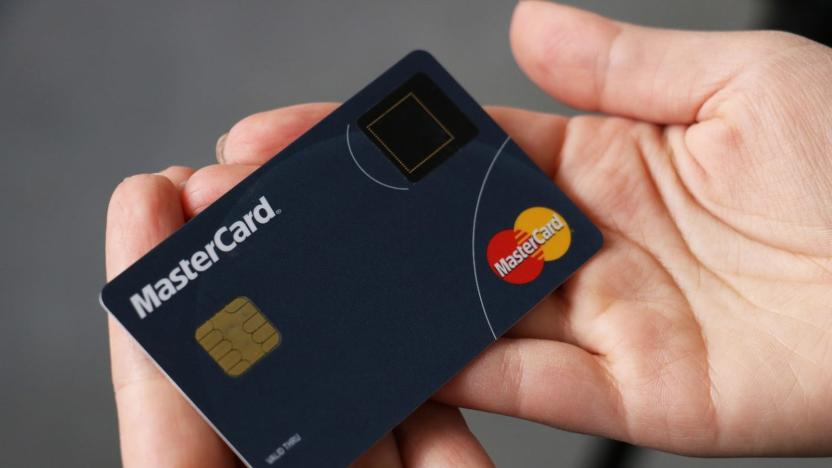
Mastercard adds fingerprint sensors to payment cards
Our fingerprints are quickly replacing PINs and passwords as our primary means of unlocking our phones, doors and safes. They're convenient, unique, and ultimately more secure than easily guessed or forged passwords and signatures. So it makes sense that fingerprint sensors are coming to protect our credit and debit cards. Mastercard is testing out new fingerprint sensor-enabled payment cards that, combined with the onboard chips, offer a new, convenient way to authorize your in-person transactions. Instead of signing a paper receipt or entering your PIN while struggling to cover up the number pad, you simply place your thumb on your card to prove your identity.

MacBook Pro leak reveals an OLED touch strip and Touch ID
Cat's out of the bag, it seems. Remember that macOS Sierra update that arrived on October 24th? It turns out that the code contains hidden images of the widely rumored next-generation MacBook Pro, and they're revealing enough to confirm more than a few details. Assuming this represents the finished product, you'll get an OLED touch strip (possibly called the Magic Toolbar) with an embedded Touch ID fingerprint reader. Not surprisingly, the reader would be useful for macOS' Apple Pay support -- you'd touch your laptop to quickly check out at a web store instead of authenticating with your iPhone or Apple Watch.
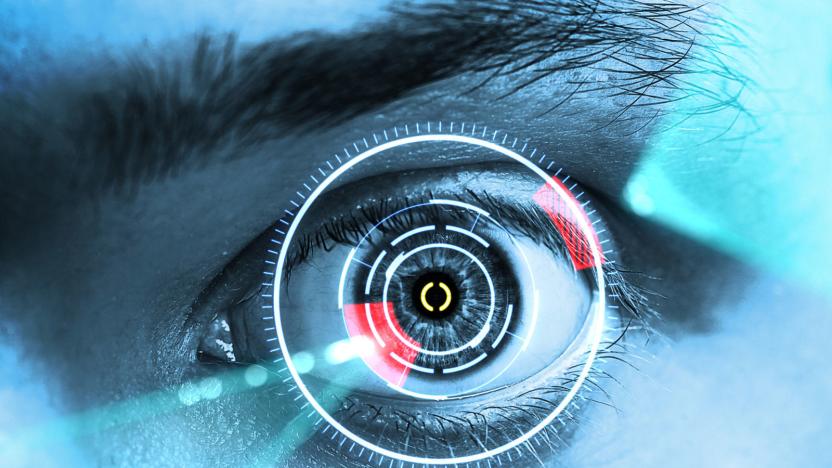
Our fingerprints, eyes and faces will replace passwords
Passwords are a pain in the ass. They're either easy to crack or hard to remember, and when breaches occur you have to come up with a whole new one. So people are trying to do away with passwords altogether, and so far, fingerprint scanners are doing the job nicely.
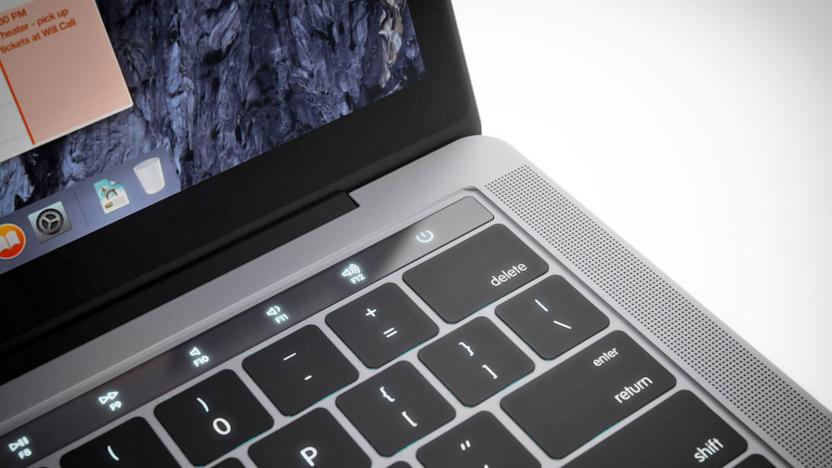
The next MacBook Pro may have a fingerprint-reading power button
That widely rumored MacBook Pro update may have more than just an OLED touch strip to draw you in. A 9to5Mac source (who has reportedly supplied "reliable" info in the past) claims that Apple will give the Pro a fingerprint-reading Touch ID power button, much like what you find on recent iPads and iPhones. Just how it would work isn't clear, but it's reasonable to imagine logging in without your usual password or taking advantage of macOS Sierra's Apple Pay support when shopping online.

Synaptics' under-glass fingerprint reader is almost here
It was just a month ago when LG Innotek unveiled its under-glass fingerprint sensor, but it's clearly not the only company working on this space. At Computex, the folks over at Synaptics were kind enough to let me take a sneak peek at a similar technology that they've been working on for two years. For some reason, photography was forbidden, but the prototype was simply a special glass trackpad -- with extra details which I am not at liberty to disclose -- retrofitted into an existing laptop. It'll essentially be a spiritual successor to Synaptics' SecurePad (pictured above), but rather than having to cut a hole through the trackpad, the next-gen fingerprint sensor will simply sit underneath the glass layer, so that when it's idle, you can still use the entire trackpad area for the usual cursor and gesture controls.

Windows phones will finally let you log-in with a fingerprint
We've know for a while now that Windows 10 would support for alternative log-in options like fingerprint, facial and iris recognition. Thanks to Windows Hello, unlocking a phone with facial recognition is possible, but using a finger to access your device hasn't been an option. Well, that's about to change. At the WinHEC conference this week, Microsoft announced that support for fingerprint scanners will be part of a Windows 10 Mobile update this summer.
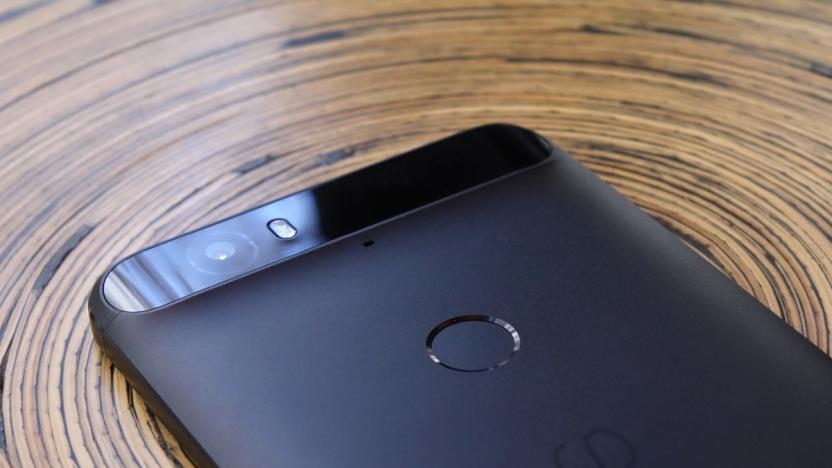
Bank of America now supports Android's fingerprint scanner
Sure, smartphone fingerprint scanners like Apple's Touch ID and Google's Nexus Imprint help keep your phone more secure. But they also make it easier to log into various apps or make purchases without having to type an unwieldy password into your phone. That's why we're glad to see the Bank of America app add support for Android Marshmallow's native fingerprint recognition APIs. This means that Nexus 5X and 6P owners can now log into their bank accounts with their fingerprint, a feature that was previously reserved for Samsung phones with a fingerprint sensor.

Access granted: Mobile security at the touch of a finger
Whether spurred by work regulations or the desire for personal data security, many of us spend more time than we'd like entering PIN codes and passwords to access our devices. Biometric authentication tools, specifically fingerprint sensors, can help us reclaim those moments by providing access with the touch of a finger. The technology isn't new, but it's only in the past few years that it's started to become standard on mobile devices. This week, we trace the ascent of the fingerprint sensor, from its early days as a peripheral to the embedded technology that's simplifying and securing our mobile lives.

Your next phone could have a fingerprint reader on its screen
Security technology firm Sonavation recently unveiled a novel means of embedding an ultrasonic fingerprint reader directly into a Gorilla Glass display. With it, mobile devices would no longer need a physical button, like the iPhone's Home button, to use as a fingerprint reader. Instead, they'd be able to press anywhere on the screen, finger grease smudges allowing. Apple has reportedly been working on a similar idea, although it doesn't seem likely we'd see a buttonless iPhone for at least another year.

Standalone scanner keeps your prints out of hackers hands
The ease with which hackers seem able to access password secured computer systems including airlines, major corporations -- even the White House -- it's little wonder that the security community is scrambling for alternatives. But even biometric locks that scan our irises, faces, and fingerprints can be broken if they're connected to a compromised computer. That's why Synaptics has developed a fully self-contained fingerprint scanner.

Android M might have its own fingerprint login system
Android is getting a TouchID-style system of its own with Android M, according to Buzzfeed's sources. Apparently it'll act a lot like the iOS tool too, bypassing passwords for associated apps in favor of reading your fingerprint. Given that I/O is practically right around the corner (next week!) it shouldn't be long before this all gets confirmed -- Google hasn't responded to our request for comment just yet. [Image credit: Getty Images]

Qualcomm's next chips will help smartphones think for themselves
Qualcomm teased the prospect of smartphones that learn a couple of years ago, and it's now much closer to making them a practical reality. The chip designer has revealed its next big mobile processor, the Snapdragon 820, will be one of the first that can handle its Zeroth cognitive computing platform. In short, it'll let your phone learn about you (and the world around you) to take action on its own. You should see photo apps that detect whole scenes, security tools that protect against unknown viruses and interfaces that depend more on expressions and head movement than button taps. It gets more ambitious than that, though. Zeroth allows for always-on sensors that detect your surroundings (such as through motion or sound) and help your phone anticipate what you want.

When fingerprint scanners are hidden in your trackpad, you'll want one
Fingerprint scanners are coming to laptops. Again. Thanks, in part, to smartphones making them, if not quite cool, then useful. Synaptics, the laptop trackpad maker, already told us all about SecurePad, a touchpad with a fingerprint sensor built into the upper-left corner, and now look! Here it is! While the sensor built into the prototype laptop had a raised outline, Synaptics also told us that, heck, it can make it look like anything a hypothetical PC maker wants -- even if that means making it indistinguishable from the "main" trackpad. Since last month, laptop manufacturers have been able to start embedding the tech into their PCs, although which company will strike first with the sensor remains a mystery.

Your fingerprint unlocks LastPass on the Galaxy S5
On any other phone, you'd have to type in the master password to access all your other passwords stored on LastPass -- including the iPhone, where Touch ID gets you into your phone and iTunes account, but stops there. But on Samsung's Galaxy S5, all you need to do is swipe your finger across the home button, now that the password manager's Android app has been updated to work with the device's biometric scanner. To set that up, you'll first need to type in your credentials like everyone else, and then activate fingerprint authentication for future use. It'll be a lot faster to add or change entries with the feature in place, and in some ways, fingerprint authentication is more secure than using a complex master password. We just hope you have no bitter enemies that'll go as far as to make a fake finger to sabotage your digital life.

Oh look, another "easy" way to spoof Touch ID on the iPhone 5s
I'll be honest: I'm getting kind of tired of seeing words like "easy" and "simple" being used to describe the ridiculous how-to videos showing that it's possible to trick the Touch ID sensor on the iPhone 5s into believing you're someone you're not. The latest in what is sure to be a never-ending string of "me too!" hackers claiming they have figured out the best way to fool the iPhone is SRLabs, though I'm not seeing how this could possibly be categorized as "easy." Here's a list of the steps to pulling off this spoof (you can check out the process used by the Chaos Computer Club on our original article regarding the trick). First, snap a photo of a perfect print from the finger that will unlock the device. Without the victim knowing, of course. Use digital photo software to separate the print from the rest of the image and then "retouch as required." If your spouse or nosy friend has recently been taking Photoshop classes, this might be why. Print the image of the fingerprint on translucent plastic using black toner. Place the image of the print over a piece of photo-sensitive copper circuit board and then expose it to intense UV lighting. The folks from SRLabs used a face tanner for this. You have one or two of those laying around, right? Develop the circuit board in a bath of Sodium Carbonate Monohydrate or Potassium Carbonate. You know, just whichever one you have in the pantry. Etch the fingerprint into the copper by placing the copper board into an etching solution. Cover the print mold with graphite spray to help spoof the capacitive properties of a normal human finger. Cover the print in wood glue, let it dry, and then peel it from the mold. Oh, and the most important step of them all: Steal the phone from the victim, without them knowing it. If they find that their phone has been stolen, they can remotely wipe the device, which would mean you just did a lot of hard work for nothing. Then unlock the device. You only have a few attempts to do this correctly, because if you fail multiple times in a row the device will demand the numeric passcode and your plan is foiled. Easy! Right? RIGHT!? Seriously though, every time one of these groups comes forward with another slightly tweaked method for fooling Apple's top-of-the-line smartphone, I can't help but think how much easier it would be to just steal the phone in broad daylight and then torture the owner into unlock it themselves. If there's anything on your phone that would warrant someone to go through these insane steps to breach its security features, you should probably be using a 20-digit passcode and keep your phone within your grasp at all times. Touch ID isn't infallible, but it's better than a 4-digit passcode (which can be brute-forced in less than an hour or simply spied by someone peeking over your shoulder), and it's clearly better than no security at all, which is how many consumers use their phones every day.












